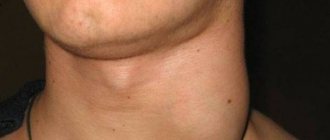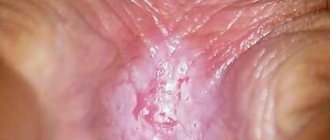The lips have very thin skin, so they are practically not protected from external influences. Because of this, every person has to deal with various lip diseases at least once in their life. In medicine they have a common name - cheilitis.
. There are about a dozen varieties of this disease.
Reasons why lip diseases develop
Human lips are very vulnerable, which often leads to redness, irritation, dryness, and even the formation of wounds and crusts. Most often, cheilitis develops under the influence of external factors.
: low temperature, wind, sun rays. Under their influence, the skin around the mouth dries out, which in itself is unpleasant. If you don't do anything about it, the problem will only get worse.
The second factor that causes lip diseases is various allergens. The culprit of the pathological reaction can be both food and cosmetics. Problems in the functioning of the internal systems of the body can also affect the face.
Most often, the delicate skin around the mouth suffers due to hormonal imbalances, fungal and viral infections. Vitamin deficiency, indigestion and general deterioration of immunity can aggravate the situation.
There are also less common causes of lip disease. They usually lead to certain types of cheilitis.
Types of lip diseases
Cheilitis can be divided into several categories. Here are their names:
- exfoliative;
- glandular;
- meteorological;
- actinic;
- atopic;
- eczematous;
- candida.
In addition, there are other diseases that are not related to cheilitis. Therefore, dryness, peeling, crust formation, and a red border near the lips are causes for serious concern and a reason for examining the entire body.
Atopic cheilitis
Atopic cheilitis is sometimes called allergic because it is caused by various irritants. The cause of the disease can be food or cosmetics. It turns out that the allergen affects the skin of the lips both from the inside and outside.
The disease manifests itself as inflammation of the red border of the lips. The skin becomes dry and peels. Cracks, itching and burning may occur.
Most often, children and adolescents suffer from lip allergies. Often it is the only symptom of neurodermatitis or atopic dermatitis.
Glandular cheilitis
Glandular cheilitis is an inflammation of the salivary glands, which are located on the surface of the mucous membrane of the lips.
The disease is more common in men over 50 years of age and is characterized by the following symptoms:
- noticeable red dots appear on the lower lip;
- copious secretion of saliva from the inflamed glands, the appearance of “dew drops”;
- dryness, cracks and erosion;
- Bacteria can enter the irritated canals, leading to the formation of pus.
There are primary and secondary forms of glandular cheilitis. The primary disease develops due to genetic predisposition. Secondary lip disease can be caused by lupus, oral leukoplakia, or lichen planus.
Meteorological cheilitis
People have to deal with this disease all the time. Standard chapping, which more often appears in winter, is meteorological cheilitis.
The first sign of the disease is a feeling of skin tightness. In advanced cases, it turns red, dries out, and becomes covered with cracks. This lip inflammation can be treated at home. It is enough to isolate yourself from harmful factors, moisturize and nourish the skin until it is completely restored.
Eczematous cheilitis
Eczematous cheilitis is one of the manifestations of eczema - an inflammatory process of a neuroallergic nature, which most often manifests itself on the face or dry areas of the body. Usually the disease is accompanied by constant dryness and redness. In advanced cases, the skin begins to peel off and become covered with blisters.
The disease often affects the tissue around the lips, so the patient may develop a red border, as in the photo on the right. This area of skin is constantly itchy and itchy.
If the disease is chronic, the symptoms are less pronounced. But in this case, seals appear on the skin.
Actinic cheilitis
Many people believe that lips need to be protected only in winter. Therefore, it is at this time of year that people stock up on moisturizing and nourishing balms to relieve dry and itchy lips. However, delicate skin must be protected not only from frost, but also from the burning sun.
With increased sensitivity to ultraviolet radiation and prolonged exposure to open areas, actinic cheilitis forms. His symptoms are standard:
- dryness, flaking;
- redness and swelling;
- compaction of individual areas.
If you do nothing, your lips become crusty. This is how the body tries to somehow protect the vulnerable part of the face. This symptom appears less frequently than others.
In advanced cases, ulcers, erosions and small compactions occur around the oral cavity. This condition is precancerous.
Exfoliative cheilitis
The exfoliative form of the disease occurs due to stress and disturbances in the functioning of the immune system. Genetic predisposition plays a major role. If your parents had this disease, there is a high risk that you will develop it too.
Exfoliative cheilitis on the lips occurs in two forms: exudative and dry. In the first case, you can observe the so-called yellow lips (pictured). A dense crust of this shade forms on the skin.
The yellow crust is easy to tear off; this process does not cause much discomfort. There are no erosions or other damage under the crust.
In the dry form of the disease, a crust also forms on the lips, but not yellow, but a lighter shade. The patient is concerned about dry skin, which explains the name of the disease. There is a desire to lick your teeth, but it is better not to do this: you can cause an infection and provoke more irritation.
Candidal cheilitis
If the lips are red, inflamed and crusted with a cheesy coating of white or yellowish color, it means that the cause of these symptoms is candidiasis. If you clean off the plaque, inflamed areas of skin will be exposed. How such a lip disease manifests itself is shown in the photo.
The disease occurs due to the excessive development of the Candida fungus. The pathogen lives on the human mucous membranes constantly, but the active development of the fungus begins only under favorable conditions, which include:
- decreased immunity due to past illnesses or lack of nutrients;
- long-term use of antibiotics;
- a sharp change in climate to a hotter and more humid one.
Fungal inflammation of the lips begins externally, but can spread to the internal tissues of the oral cavity, thus leading to candidal stomatitis.
Lip cancer
Many of these diseases, if not given proper attention to their treatment, lead to cancer. Perhaps this is the most terrible disease that can affect the lips and oral cavity.
At first, the symptoms of cancer are unremarkable. The lips will turn red and there will be slight inflammation. The skin may become dry and cracked. If the patient moisturizes and nourishes the affected tissues, but the lips remain sore for several weeks, he should sound the alarm and consult a specialist. Later, ulcers and lumps may appear.
Usually, if treatment is started correctly and on time, the cancer recedes completely. Only in rare cases are relapses possible.
There is another disease that is compared to cancer - Manganotti syndrome. The disease manifests itself in the form of a noticeable ulcer on the lip, which is precancerous. However, due to the fact that in most cases the syndrome still develops into a tumor, it is more often classified as oncological diseases.
Causes
The most common cause of flaking is dryness, which most people experience. This problem is not a life-threatening condition; some people (usually women) use lip balm and the dryness goes away.
Exfoliative cheilitis
Exfoliative cheilitis
This is a chronic skin condition characterized by persistent flaking and dryness of the lips.
If left untreated, continuous peeling leads to other symptoms such as burning, cracking, peeling and pain.
The exact cause of this condition is unknown. However, there are several factors that are thought to contribute to the problem, including an overgrowth of yeast infection, HIV infection, poor oral hygiene, nutritional deficiencies, and having a weakened immune system.
Candidiasis
Yeast Infection
Oral thrush, also known as oral thrush, is the cause of dry and flaky lips. Candidiasis is a yeast or fungal infection caused by Candida fungus on the mucous membranes of the mouth. Candida albicans is the most common type of infection in children.
The microorganism that causes candidiasis is not considered dangerous until it invades human tissue when the immune system is weakened. This is in most cases often accompanied by an opportunistic infection.
Signs and symptoms of this infection may include:
- Burning sensation on lips and mouth
- Soreness
- Dryness and flaking
- Red or white lesions.
Most people do not show obvious symptoms. Thus, candidiasis may be misdiagnosed as burning mouth syndrome, which is a condition characterized by a burning sensation that has no underlying dental or medical cause.
The diagnosis of this disease can only be made in medical institutions. If it is not visually confirmed, special diagnostic methods can be used to detect the presence of Candida species, such as culture or serological tests after a smear or scraping.
Once diagnosed, candidiasis can be treated with a topical antifungal medication. Patients with a weak or compromised immune system may require systemic treatment with oral or intravenous antifungals.
Cancer
Skin cancer on the lip
Skin cancer is the most common form of cancer worldwide. Overt exposure to direct ultraviolet rays is a common cause of the disease. According to research by Dr. William Stebbins and Dr. William Hanke, skin cancer on the lip is not that rare.
There are two most common types of skin cancer: basal cell carcinoma and squamous cell carcinoma. In addition to ultraviolet light from the sun, consumption of tobacco and strong alcoholic beverages can also trigger the disease.
Other symptoms include the following:
- Blisters, pain and lesions in the mouth and lips
- White and red spots on the lips
- Bleeding from the lips, tongue and mouth
- Swelling of the jaw
- Soreness
- Peeling and chapped lips.
Early diagnosis and treatment are essential to prevent cancer cells from spreading to other parts of the body. Once diagnosed, treatment options will vary depending on its stage and type. In most cases, lip cancer can be treated with surgery, radiation therapy, or chemotherapy.
Skin infection
Herpes on the lips or colds (not to be confused with the common cold)
Lips are very sensitive. They can become dry or cracked simply by being exposed to the sun, wind or cold. Simple skin infections on the face and around the mouth can also cause lips to peel and lose more moisture than usual. Once this happens, the skin becomes tight and begins to split. During an infection such as herpes, it is very tempting to bite into flakes of dry skin. This should be avoided as the lips may bleed and treatment will be slower.
Treating the underlying cause is the best way to get rid of flaking. Regular use of lip balm containing petroleum jelly or beeswax may also help stop the problem. If there is pain, redness, or infection, your doctor may prescribe antibiotics or antifungals to clear the infection.
Dehydration
Dehydration
Dehydration is the excessive and dangerous loss of water from the body. Unlike skin, lips do not have sebaceous glands, which help prevent moisture loss.
Dry lips can be a sign of widespread dehydration. You can prevent this by drinking plenty of fluids, especially water. Severe dehydration can be life-threatening and requires immediate medical attention.
Drooling in children
In young children, drooling is the main cause of dry, peeling lips. Uncontrollable dripping of saliva from the mouth is common in children, but can also occur in adults.
Licking
Lip licking is a common cause of dryness, especially in children. If you think that you will moisturize them by licking them, you are mistaken. This habit can turn into a continuous cycle of lip dehydration.
Saliva evaporates and the surface loses more moisture, leaving the skin drier than before licking. The rough, dry and wrinkled top layer of the lips separates from the bottom layer and begins to flake off.
Biting or chewing your lip can have the same effect. To relieve the condition, it will be helpful to apply a mild lip balm. In addition, it is necessary to ensure that a sufficient amount of fluid enters the body.
Reaction to cosmetics or toothpaste
An allergy of the skin of the lips to lip balm, which manifested itself in the form of swelling of the lower lip and dryness with peeling of the upper lip.
Cosmetic products, such as lip balm or lipstick and most toothpaste, rarely contain ingredients that can cause irritation, causing dryness and flaking. But this happens to some people. If the problem is the result of using such products, you should try replacing them.
Instead of harsh, low-quality products that harm your lips, you need to use high-quality products that will keep your lips healthy.
Allergies
An allergic reaction to foods, supplements, or medications can also cause dry skin. Taking large amounts of vitamin B12 supplements, for example, can cause an allergic reaction to cobalt, causing lips to become dry, peeling, and bleeding.
According to dermatologist Audrey Kunin, some ingredients in products like toothpaste, lip balm and others can cause an allergic reaction that leads to dryness and flaking.
According to a dermatologist, if your toothpaste contains guaazulene, or your lipstick has propyl gallate or phenyl salicylate as an ingredient, peeling lips are likely due to an allergic reaction to these substances.
Other food, drink, or drug allergies may also cause these symptoms. Some forms of allergic reaction can be life-threatening, so urgent medical diagnosis is necessary to identify and stop them.
Environmental reasons
Environmental factors can also contribute to skin peeling. When exposed to the sun, wind or cold, the skin loses a lot of moisture, making it dry and cracked. This explains why dry lips are common in dry, cold weather and periods of high winds.
Internal diseases
Peeling can sometimes be a sign or symptom of an underlying medical cause. An autoimmune disease, for example, can cause lips to become sensitive to the sun, which can cause them to become dry and flaky. Before going outside, be sure to apply lip balm and sunscreen.
Other skin conditions such as psoriasis, eczema (atopic dermatitis) and rosacea can also cause dry skin.
When there is an underlying medical cause for a problem, treating or controlling it is the best way to get rid of its symptoms.
Lack of protection
As mentioned, lips are very sensitive. Dermatologists say that more moisture is lost from the lips than from any other part of the body. Its continuous loss leads to dry and cracked lips. To prevent this, be sure to apply a protective layer of balm or sunscreen.
Features of cheilitis in children
Lips suffer due to minimal protection. In children it is even weaker, so cheilitis worries them somewhat more often. In addition to children, the risk group includes the elderly and pregnant women.
The main causes of cheilitis in childhood:
- allergic reaction to food;
- use of products for the care of the skin of the lips and around them, not intended for children;
- genetic predisposition;
- infectious and fungal infections;
- weather.
Typically, infantile cheilitis does not develop until critical stages. When children's lips turn red, parents immediately begin to treat them. After all, people pay more attention to the health of the younger generation than to their own. If cheilitis in children still requires treatment, therapy should not be delayed longer than a few weeks. The main thing is to remove all allergens from the children's diet and balance the diet.
How to treat lips with cheilitis
The most important thing in treating cheilitis is to identify its cause, which is difficult to do without professional help. You'll have to contact a specialist. First, it is better to go to a therapist, and he will then refer you to a specialist doctor.
Typically, treatment for diseases of the lips and skin around the mouth is based on eliminating not the symptoms, but the root cause. It includes lifestyle changes, proper nutrition, and medication.
If the cause of inflammation is an infectious or fungal infection, local drugs are included in the therapy. Typically, patients are prescribed various medicinal ointments for external use, which must be applied to damaged skin several times a day:
- anti-inflammatory – Tetracycline, Erythromycin;
- antifungal – Clotrimazole;
- hormonal – Prednisolone.
To cure lips, you need to influence them not only from the outside, but also from the inside. The skin around the mouth often suffers from a lack of B vitamins, so they are often prescribed in the treatment of lips.
Folk remedies
There are simple remedies you can use at home to relieve and stop symptoms.
Aloe vera gel
Of all the natural home remedies, aloe vera gel is the most commonly used. It has healing and antibacterial properties that can help prevent infection. After applying the gel, you can get soft and moisturized lips.
- Wash and extract the gel-like pulp from fresh aloe leaves
- If the product is intended for use by children, add 2 tablespoons of raw honey
- Apply the paste to your lip and leave it on for a few minutes before rinsing off
- Repeat the procedure several times.
Castor oil
Castor oil is another great remedy that can be used to get rid of dryness and flaking. Applying it to the lips, followed by a thin layer of soft Vaseline, can seal in the healing process.
Glycerol
In dry environments, applying glycerin to the skin can help increase moisture levels. It is known as an excellent natural humectant that relieves dry skin while retaining moisture.
Before going to bed or going out into the sun, you can try applying a few drops of glycerin to your lips. The product restores damaged tissue, accelerates the healing process and protects against harsh environmental conditions.
Iron supplements
In cases of anemia, iron supplements can help correct the low red blood cell count that leads to flaking.
If you don't think a vitamin or mineral deficiency is causing this problem, you should ask your doctor to check the condition as soon as possible.
Cream
Fresh cream is another effective home remedy that you can use when your lips are peeling. All you need to do is take fresh cow's milk cream, apply it to the affected area and leave it for a few minutes and then rinse with clean water. You need to repeat the manipulations at least twice a day to achieve optimal results.
Sugar scrub
You can also use sugar to restore the natural softness of your lips.
- Mix 2 tablespoons of honey with a tablespoon of sugar
- Gently mix the ingredients to obtain a liquid paste.
- Apply the paste to your lips and leave it for a few minutes
- Scrub the surface of your lips to get rid of dead skin.
How to get rid of unpleasant symptoms at home
It is not worth treating at home without seeing a doctor. However, there are ways that you can resort to to reduce discomfort:
- If your lips become inflamed due to the sun or cold, it is advisable that they are always covered with a protective layer of balm.
- For severe itching and burning, which occur in almost all forms of cheilitis, cold compresses will help. Before applying them, the skin is covered with a layer of balm so that the lips are treated simultaneously with the reduction of pain.
- If your lips are red and covered with cracks, sores or any other open wounds, you need to make sure that bacteria do not get into them. The surrounding skin and teeth should be treated with a cotton pad soaked in hydrogen peroxide or Miramistin. Special antiseptic ointments will have the best effect.
- If pain and itching are unbearable, painkillers can be used. Ointments with a cooling effect will have the same effect.
All methods of folk treatment for cheilitis will be useless if you resort to them thoughtlessly - without consulting a doctor. In most cases, inflammation, redness and itching of the lips are harmless. Such symptoms can go away even without therapy, but sometimes they indicate dangerous diseases, so medical help should not be neglected.
Traditional methods of therapy
In addition to pharmaceutical drugs, good old folk remedies will also have an excellent effect.
- A paste of baking soda will help relieve itching after an insidious insect bite.
- Flaxseed and sea buckthorn oils should be consumed internally and externally to replenish the reserves of vitamins A and E in the body, as well as to soften jams and cracks in the corners of the mouth.
- Brewed celandine or chamomile leaves (1 tablespoon per glass of boiling water) will help heal chapped lips.
- For an antibacterial effect, it is useful to lubricate the affected skin with tea tree oil.
- Onions and garlic help at the first signs of herpes. They are crushed and applied to the skin.
A girl’s beautiful, seductive lips are a source of special pride. I don’t want my beauty to be overshadowed by the appearance of unpleasant symptoms. You should pay extra attention to your lips during the cold and hot seasons, because it is then that they are most susceptible to the negative effects of the external environment.
Hygienic lipstick should be in the cosmetic bag of every girl who takes care of her appearance. In addition, you need to remember about proper nutrition, rich in vitamins, and a proper drinking regime (it is recommended to drink water at the rate of 30-40 g of water per kilogram of weight per day).








